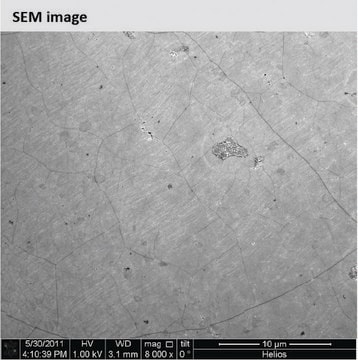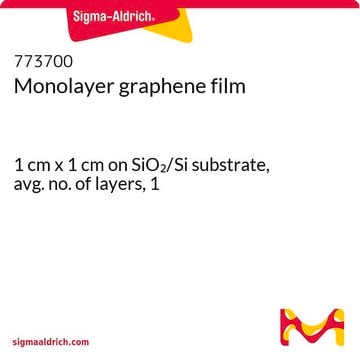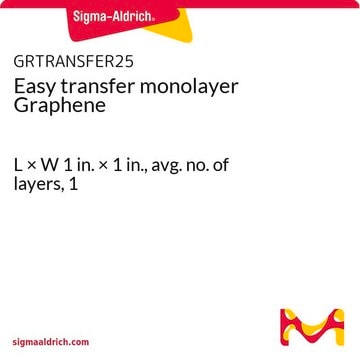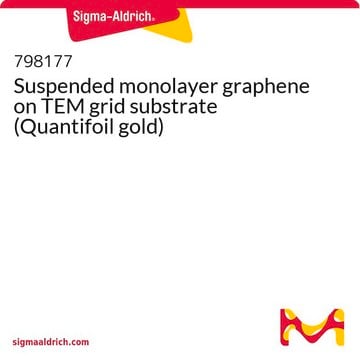799009
Graphene, monolayer film
1 in x 1 in on copper foil, avg. no. of layers, 1
Sinónimos:
Graphene/Cu
About This Item
Productos recomendados
product name
Monolayer graphene film, 1 in x 1 in on copper foil, avg. no. of layers, 1
Quality Level
description
Coverage: >95%
FET Electron Mobility on Al2O3: 2;000 cm2/V·s
FET Electron Mobility on SiO2/Si (expected): 4; 000 cm2/V·s
Grain size: Up to 10 μm
Number of graphene layers: 1
Transparency: >97%
form
film
feature
avg. no. of layers 1
resistance
350 Ω/sq
L × W × thickness
1 in. × 1 in. × (theoretical) 0.245 nm, monolayer graphene film
1 in. × 1 in. × 18 μm, copper foil substrate
color
transparent
¿Está buscando productos similares? Visita Guía de comparación de productos
General description
Transfer Method: Clean transfer method
Quality Control: Optical Microscopy & Raman checked
application
Storage Class
11 - Combustible Solids
wgk_germany
WGK 3
flash_point_f
Not applicable
flash_point_c
Not applicable
Certificados de análisis (COA)
Busque Certificados de análisis (COA) introduciendo el número de lote del producto. Los números de lote se encuentran en la etiqueta del producto después de las palabras «Lot» o «Batch»
¿Ya tiene este producto?
Encuentre la documentación para los productos que ha comprado recientemente en la Biblioteca de documentos.
Los clientes también vieron
Artículos
Catalytic water splitting produces hydrogen crucial for renewable energy, petroleum refining, and chemical industry applications like methanol production.
Advances in scalable synthesis and processing of two-dimensional materials
Nuestro equipo de científicos tiene experiencia en todas las áreas de investigación: Ciencias de la vida, Ciencia de los materiales, Síntesis química, Cromatografía, Analítica y muchas otras.
Póngase en contacto con el Servicio técnico







